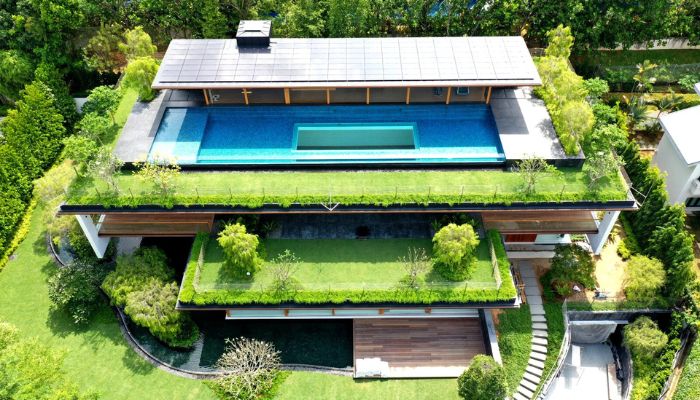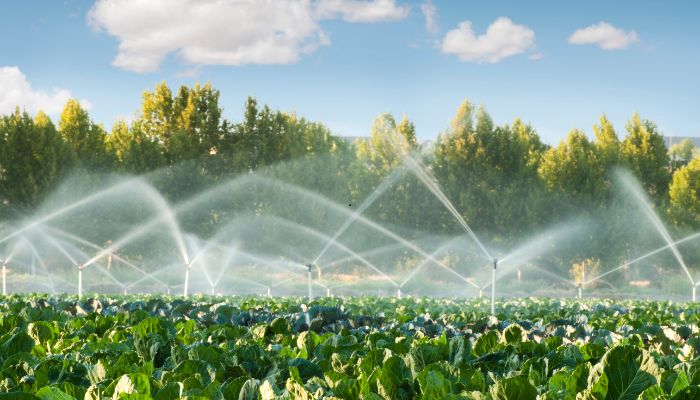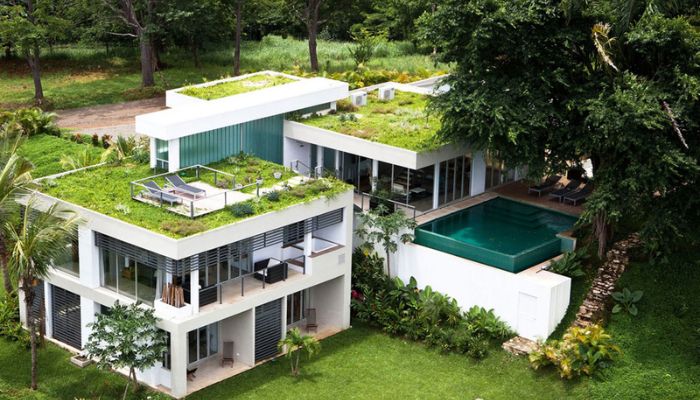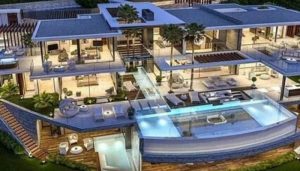Eco-friendly homes are the future of residential living. These homes are designed with sustainability in mind, minimizing their environmental impact while offering a range of benefits to homeowners. In today’s real estate market, the demand for eco-friendly homes is on the rise. Buyers are not just looking for a beautiful space; they want homes that align with their values, particularly sustainability. But what exactly makes a home eco-friendly, and why are these features so attractive to modern homebuyers?
The Appeal of Eco-Friendly Homes

Sustainability isn’t just a buzzword; it’s a lifestyle choice that more people are adopting every year. One of the primary reasons behind the surge in interest in eco-friendly homes is the growing awareness of climate change and the need for environmental stewardship. Homebuyers are increasingly prioritizing green features that lower their carbon footprint and reduce their utility bills. This demand is translating into higher property values for homes with sustainable features.
Eco-friendly homes offer a dual benefit: they contribute to a healthier planet while helping homeowners save money in the long run. With lower energy and water bills, green homes can provide significant savings that appeal to cost-conscious buyers. On top of that, the comfort and convenience of living in a home designed to work with nature rather than against it is another major selling point.
Energy-Efficient Features

One of the most important aspects of an eco-friendly home is energy efficiency. Homes equipped with energy-saving features are increasingly popular because they lower utility costs and reduce environmental impact. Some key energy-efficient features include:
- Solar Panels: Harnessing solar energy is one of the most effective ways to reduce reliance on fossil fuels. Solar panels not only power the home but can also provide excess energy to the grid, earning homeowners rebates or credits.
- Energy-Efficient Appliances: From refrigerators to washing machines, modern energy-efficient appliances use significantly less electricity and water, further reducing utility bills.
- LED Lighting: Swapping out traditional light bulbs for LEDs reduces energy consumption by up to 75%. Plus, LEDs last much longer, meaning fewer replacements and less waste.
Water Conservation Systems

Water is one of our most precious resources, and eco-friendly homes incorporate systems to use it wisely. These features are particularly appealing in areas prone to drought or water shortages:
- Rainwater Harvesting: Installing a system to collect and store rainwater for gardening or non-potable uses reduces dependency on municipal water supplies.
- Low-Flow Plumbing Fixtures: Faucets, toilets, and showerheads designed to use less water can make a big impact on overall consumption without sacrificing performance.
- Greywater Recycling: By treating and reusing water from sinks and showers, homeowners can significantly cut down on freshwater use.
Smart Home Integration for Sustainability
Technology plays a big role in making homes more sustainable. Smart home systems that help control energy usage and improve efficiency are highly sought after by tech-savvy buyers:
- Smart Thermostats: These devices learn a homeowner’s schedule and adjust the temperature automatically to conserve energy when no one is home.
- Energy Monitoring Systems: Homeowners can track their energy usage in real-time, helping them make more informed decisions about their consumption habits.
- Automated Lighting Systems: Smart lighting can be programmed to turn off when rooms are unoccupied or adjust brightness based on natural light availability, further reducing electricity usage.
Sustainable Building Materials
Building a home sustainably starts with the materials used in construction. These materials not only reduce environmental impact but also offer a unique aesthetic appeal:
- Recycled and Repurposed Materials: From reclaimed wood to recycled steel, using repurposed materials reduces the demand for new resources and minimizes waste.
- Bamboo Flooring: Bamboo grows quickly and is a renewable alternative to traditional hardwood, making it a great eco-friendly option for flooring.
- Low-VOC Paints: Paints that contain low levels of volatile organic compounds (VOCs) improve indoor air quality and are safer for both the environment and the people living in the home.
Green Insulation Solutions
Insulation is key to maintaining a comfortable temperature inside the home without excessive energy use. Sustainable insulation options not only provide excellent thermal performance but are also made from eco-friendly materials:
- Recycled Denim and Wool Insulation: These materials are both highly effective insulators and are made from natural or recycled sources, offering an environmentally friendly alternative to traditional insulation.
- Spray Foam Made from Organic Materials: Some newer insulation products are derived from plant-based materials, reducing the reliance on petroleum-based products.
Indoor Air Quality Enhancements
For health-conscious buyers, the indoor air quality of a home is a major selling point. Eco-friendly homes often incorporate features that improve the air inside, which can make a significant difference for those with allergies or asthma:
- Air Purifiers and Ventilation Systems: These systems ensure that fresh air is constantly cycled into the home, reducing pollutants and allergens.
- Non-Toxic Building Materials: From non-toxic adhesives to formaldehyde-free cabinetry, eco-friendly homes minimize exposure to harmful chemicals.
Passive House Design
Passive house design is a rigorous standard for energy efficiency, drastically reducing a home’s ecological footprint:
- What is Passive House Design?: Passive homes are designed to use minimal energy for heating and cooling through airtight construction and strategic use of insulation.
- Passive Solar Heating and Cooling: These designs make use of natural sunlight for warmth in the winter and shading for cooling in the summer, reducing the need for artificial heating and cooling.
Sustainable Landscaping
The outside of an eco-friendly homes is just as important as the inside. Sustainable landscaping not only looks beautiful but requires fewer resources to maintain:
- Native Plants and Xeriscaping: Using drought-resistant, native plants reduces the need for watering and ensures a low-maintenance yard.
- Drip Irrigation Systems: These systems deliver water directly to the roots of plants, minimizing evaporation and conserving water.
Eco-Friendly homes Roofing Options
The roof is a crucial element of any home, and eco-friendly options can greatly improve energy efficiency:
- Cool Roofs: These roofs reflect more sunlight and absorb less heat, helping to keep the home cool in hot climates.
- Green Roofs (Living Roofs): Covered in vegetation, these roofs provide insulation, reduce stormwater runoff, and improve air quality.
- Solar Shingles: These combine the functionality of solar panels with the aesthetic appeal of traditional roofing materials, offering a sleek, energy-generating solution.
Innovative Windows and Doors
Windows and doors are critical to maintaining a home’s energy efficiency:
- Double and Triple-Pane Windows: These windows provide superior insulation compared to single-pane options, helping to regulate indoor temperatures.
- Energy-Efficient Doors: Well-insulated doors prevent drafts and heat loss, making the home more comfortable year-round.
- Window Treatments for Insulation: Blinds, shades, and curtains can also play a role in reducing heat loss during winter and keeping the home cool in the summer.
The Role of Certifications and Labels
Certifications give buyers confidence that a home meets high sustainability standards:
- LEED Certification: LEED-certified homes meet strict environmental standards for energy and water efficiency, materials use, and more.
- ENERGY STAR-Rated Homes: These homes meet energy-efficiency guidelines set by the U.S. Environmental Protection Agency, making them more cost-effective to operate.
- Passive House Certification: Homes that meet this certification are incredibly energy efficient, using up to 90% less energy than typical homes for heating and cooling.
Financial Incentives for Sustainable Homes
Sustainable homes come with significant financial perks beyond lower utility bills:
- Government Rebates and Tax Credits: Many local and federal programs offer financial incentives for installing eco-friendly features like solar panels or energy-efficient appliances.
- Increased Property Value and Resale Potential: Homes with green certifications and sustainable features often sell for a premium compared to conventional homes.
Conclusion
The future of homeownership is green. Eco-friendly homes not only offer significant benefits to the environment but also provide financial savings and improved quality of life for homeowners. As more buyers seek out sustainable living, homes equipped with energy-efficient systems, sustainable materials, and smart technologies are becoming increasingly marketable. Sustainable features aren’t just a trend—they’re the future of real estate.
FAQs
How do solar panels increase home value?
Solar panels reduce utility costs, making the home more attractive to buyers. Additionally, homes with solar energy systems often sell for a premium.
Is it expensive to retrofit a eco-friendly homes ?
The cost of retrofitting varies, but many eco-friendly homes upgrades, like insulation or energy-efficient appliances, offer long-term savings that outweigh initial costs.
What’s the return on investment for green home features?
Sustainable features can significantly increase a home’s resale value and reduce ongoing energy costs, providing both immediate and long-term financial benefits.
Do eco-friendly homes have a higher resale value?
Yes, eco-friendly homes typically have higher resale values due to lower operating costs and the growing demand for sustainable living.
Can small homes be eco-friendly too?
Absolutely! Even tiny homes can incorporate energy-efficient systems, sustainable materials, and water-saving features to minimize their environmental impact.




